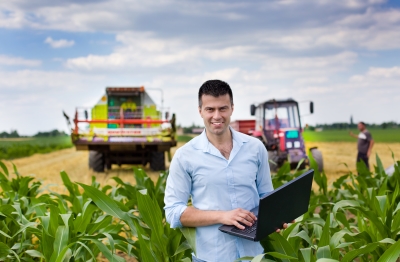
By Chris Inwood, Queensland Grains Biosecurity Officer
People, vehicles, and equipment are known risk pathways that can bring new pests (insects, diseases, or weeds) onto your farm, especially if they visit parts of your farm close to production paddocks or harvested grain storage area.
Keeping track of visitors and vehicles on-farm movements is vital to managing biosecurity risks and managing workplace health and safety.
While it may seem a daunting task to keep track of everyone who has been on your farm, a few simple and easy steps to implement biosecurity measures will help safeguard your livelihood.
One such, measure is maintaining a visitor register. The visitor information collected, and method of collection will vary for each farm, however the key information to be recorded to assist with tracking in the event of a suspected exotic pest detection or pest response is:
Farm visitors can be from a wide range of places and occupations and therefore have different levels of risk associated with them. The risk a visitor poses to your property will depend on where they have come from, where they need to go, what biosecurity (farm hygiene) practices they use and what activities they perform on your farm. If a new pest does enter your farm, understanding how and when it might have arrived will be vital to pest control and eradication efforts.
A good place to start is by identifying the types of people who come to your farm. Typical visitors to a farm include:
Once visitors have been identified it is important to assess the level of biosecurity risk they bring to the farm. For example, if your next-door neighbour visits the house this is a very low risk. However, anyone who is entering the production areas of the farm poses a higher risk, especially if they drive their vehicle into your paddocks. Where a visitor has come from is also key to determining the risk they pose for your farm. For example, visitors who have recently travelled overseas/interstate and have been to production areas on farms would be considered a higher risk.
The Grains Farm Biosecurity Program (GFBP) has developed a Visitor biosecurity risk assessment tool to assist in assessing risk of visitors on-farm and examples of the actions required to reduce the risk.
As soon as the visitor risk level has been determined, you should consider what hygiene requirements you need to implement to reduce the risk of them introducing new pests. This will be determined by the areas of the property they will access and what tasks they are conducting. For instance, if they won’t be coming into contact with your cropping area the risk is reduced. However, if they are to inspect crops or work in the production zones of the farm, it is crucial to identify the risk of them introducing new pests and to implement measures to minimise or negate identified risks. An excellent tool to assist identifying and assessing the level of risk is a check list or questionnaire.
Once a process for evaluating visitor risk has been established, determining how to keep track of the visitors is the next step. When establishing your visitor log and risk assessment checklist it is important to remember that this may not be a one size fits all process. For example, visitors such as agronomists or contractors will be classified as higher risk, however, they might be able to be treated more like employees and asked to adhere to a predetermined set of farm hygiene requirements such as boot washing, and using your farm vehicles and equipment.
Remember the easier it is to undertake a process or protocol the more likely it will be followed. Therefore, working out the best tools and methods to collect and store the information is critical to ensuring the continued protection of your farm.
Common methods used to collect and store visitor information include:
There is also a wide range of technology such as apps and QR codes that are being developed to assist in recording, tracing, and tracking farm visitors. One example is the recently released Farm Check in App, available on the Queensland Department of Agriculture and Fisheries (QDAF) website.
Regardless of what system is implemented, setting visitor biosecurity expectations is key to the success of the system. A biosecurity sign at the front gate with contact details of who to contact before entering the farm plays an important part in raising awareness of your biosecurity measures.
For regular visitors such as agronomists, contractors or researchers it may be better to set up a separate simple process for them to check in such as a Farm Biosecurity Agreement setting out compliance arrangements.
Finally, having an effective visitor register and risk assessment system can have a two-fold benefit for your agricultural business. By assessing a visitor’s level of biosecurity risk before they enter your farm, and implementing measures to mitigate that risk, you will reduce the chances of introducing new pests. And an accurate and up to date visitor traceability system may help to identify potential sources of new pests, increasing opportunities for better control and eradication.
The Grains Farm Biosecurity Program (GFBP) is an initiative to improve the management of, and preparedness for, biosecurity risks in the grains industry at the farm and industry levels.
Launched in 2007, the program is managed by Plant Health Australia and funded by growers through Grain Producers Australia together with the New South Wales, Queensland, South Australian, Victorian and Western Australian governments.
Visit the Grains Farm Biosecurity website for practical resources that include fact sheets, videos, how to guides, online training and strategies to assist in the management of grains farm biosecurity risks.
